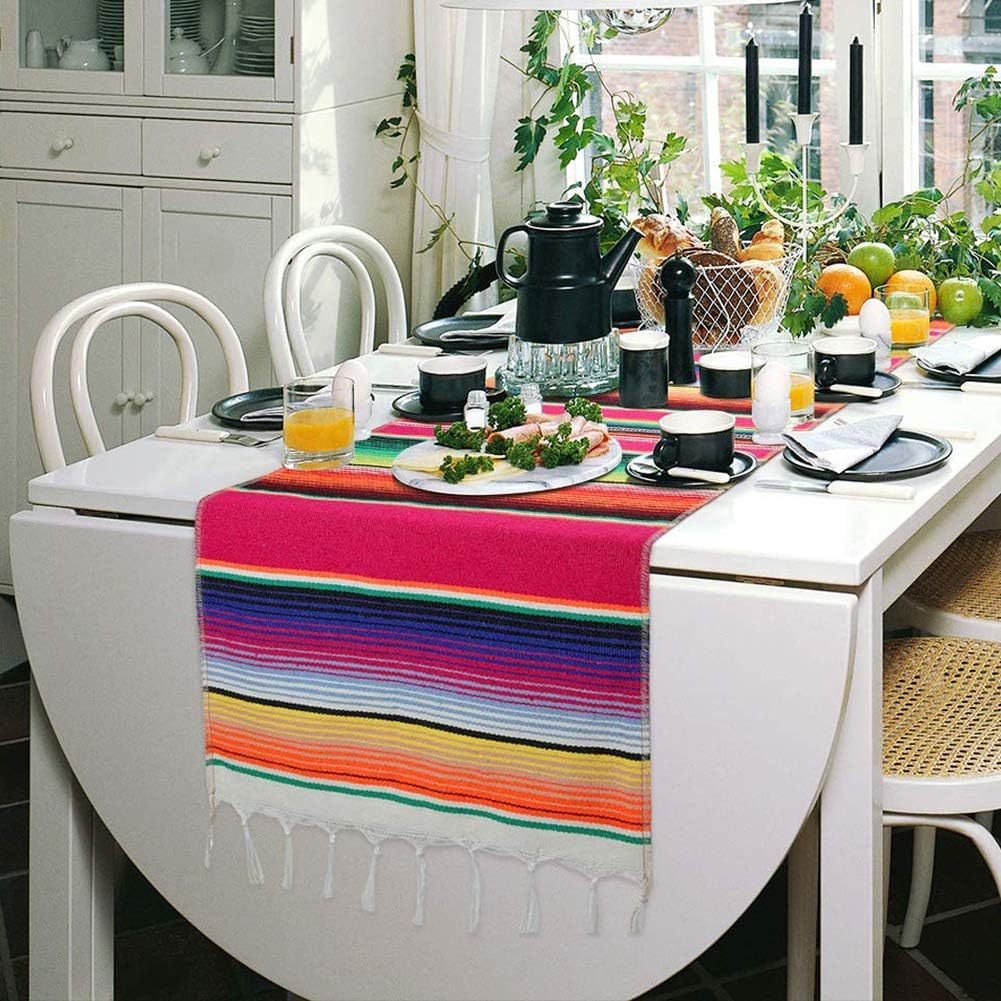
How to Use a Table Runner: Styling Tips with Vibrant Mexican Designs
A table runner is more than just a strip of fabric—it’s a style tool that instantly adds personality, color, and texture to your space. Whether you’re dressing a dining table for guests, brightening up a coffee table, or styling a console, the right runner sets the tone.
Among the many styles out there, Mexican table runners stand out for their rich colors, bold patterns, and cultural heritage. From the bright stripes of a Mexican serape table runner to the detailed stitching of a Mexican embroidered table runner, these pieces bring warmth and artistry to any home. Here’s how to use them like a pro.
1. Choose the Right Runner for Your Table & Occasion
Measure First
For a balanced look, let your runner hang 6–12 inches over each end of the table.
- Dining table (6–8 ft): 72–96 inches long, 12–18 inches wide
- Coffee or console table: 36–48 inches long
Pick Your Style
- Mexican Embroidered Table Runner – Features hand-stitched flowers, geometric designs, or folk art motifs. An embroidered table runner Mexico is perfect for weddings, dinner parties, or festive occasions.
- Mexican Serape Table Runner – Known for its striped, colorful design and fringed ends. Adds rustic charm, perfect for taco nights or outdoor gatherings.
- Classic Mexican Runner Table Style – Sometimes blends embroidery with woven serape patterns for a balanced look.
2. Prep the Table
Wipe the surface clean and decide whether you want to layer the runner over a tablecloth.
- For wood tables, placing a runner directly lets the grain show and complements the texture.
- A neutral tablecloth (white, beige, or gray) creates a calm backdrop so the colors of a Mexican table runner pop.
3. Placement Techniques
Rectangular or Oval Tables
- Centered: The classic look—runner placed straight down the middle, equal drop on both ends. Ideal for showcasing embroidery or stripes.
- Offset: Shift the runner slightly to one side for a modern, asymmetrical feel. Works well with bold Mexican serape table runners.
Round Tables
- Cross Placement: Lay two runners in an “X” pattern, intersecting at the center. Try mixing a serape with a solid runner for contrast.
- Single Across: For smaller round tables, a short runner across the diameter looks balanced.
4. Style with Complementary Decor
- Centerpieces: Keep them low so they don’t hide the design. A terracotta vase with marigolds works beautifully with a serape runner; a brass candleholder suits an embroidered piece.
- Place Settings: Coordinate with runner colors—red napkins for red-accent embroidery, green placemats for serape stripes.
- Small Accents: Bowls of fruit, ceramic figurines, or woven placemats can tie the look together without cluttering the space.
5. Care & Creative Uses
Most Mexican runners are cotton or wool—hand wash or use a gentle machine cycle in cold water. Air dry to preserve color.
You can also use them beyond the dining table:
- Across a coffee table
- On a console in the entryway
- Hung on a wall as textile art
Final Takeaway
Learning how to use a table runner is about more than measurements—it’s about style, proportion, and personality. A Mexican table runner, whether embroidered or woven in serape style, brings instant warmth and vibrancy to your home. With the right placement and decor, it’s more than just fabric—it’s a conversation starter.

